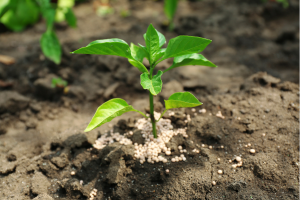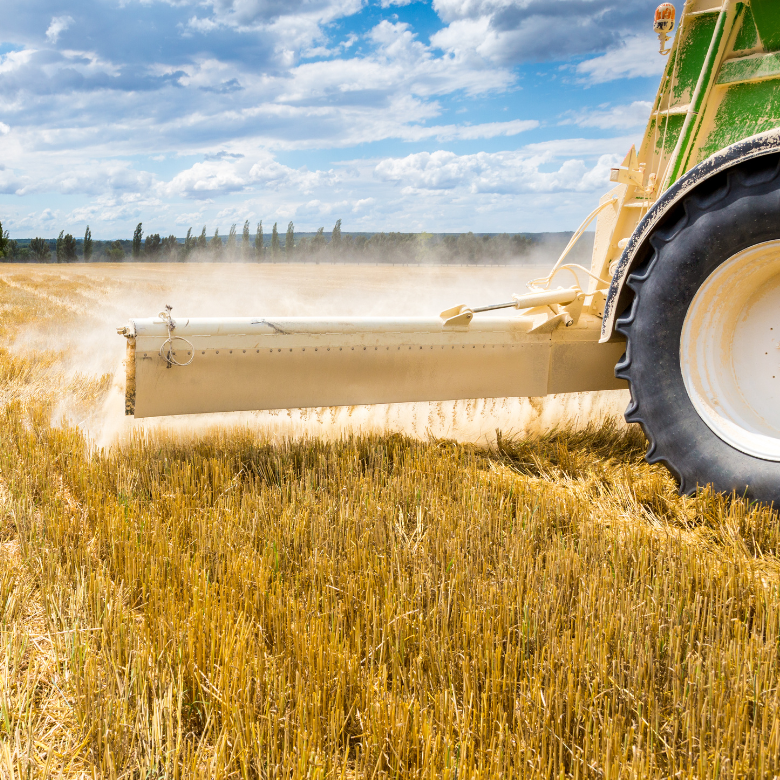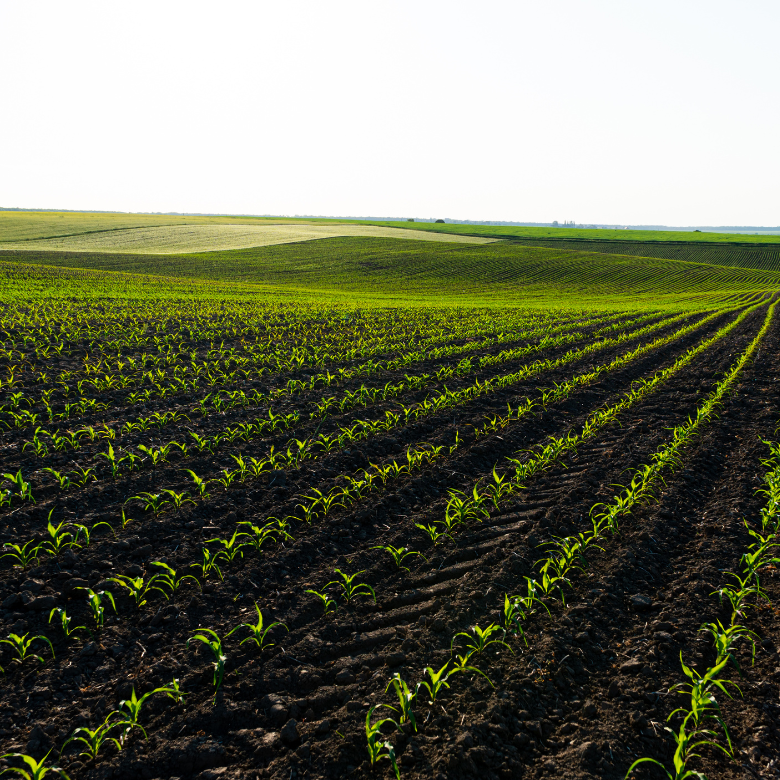One of the fundamental actions of every farmer is to choose the right fertiliser. Agents used in the cultivation of plants must be chosen carefully, as every soil needs different mineral elements. Due to the predominantly acidic soil reaction in our country, calcium fertilisers prove to be a good choice in many cases. We suggest when and why to use them.

What are lime fertilisers?
Liming a field using specialised agents is a popular process to restore the soil’s pH value. Lime has the ability to deacidify it. This is particularly important as most of our country’s soils are acidic, which is unfavourable for many crops. A significant proportion of plants, including vegetables grown in our country, need soil with alkaline, neutral or slightly acidic properties to grow.
The use of calcium fertilisers often proves necessary, as even soil with a high pH can become acidic over time. Both natural processes and human activities contribute to this. The acid reaction of the soil is caused by:
- intensive cultivation that acidifies the soil,
- unskilfully selected or excessive use of chemical plant protection products,
- pollutants emitted into the atmosphere and run-off into rivers,
- harmful micro-organisms,
- acid rain and climate change.
With calcium fertilisers, we are able to neutralise the effects of these processes. However, it’s important to remember that even the best remedy will not help us once and for all. Every farmer must take care of basic soil protection to prevent acidification.
An important step is to take cyclic measurements of soil pH. To do this, soil samples must be submitted to the laboratory. Only such a result will be accurate and tell us whether fertiliser lime will be a good choice. It may be that the acidity reaction turns out to be correct and the soil needs a different kind of support.

Calcium fertiliser for lawns and other plants is a very valuable measure, as calcium deficiencies in the soil can cause:
- reduction of the absorption of nutrients by plants,
- breakdown of the earth’s structure,
- inhibition of the development of the plant’s root system,
- soil acidification.
High-quality lime fertilisers are able to fertilise the soil, enrich it with essential minerals and also prevent the growth of pathogenic microorganisms.
Characteristics of lime fertilisers
Calcium fertilisers are usually created by roasting limestone at high temperatures. This process results in a reactive water-soluble agent (calcium oxide and calcium hydroxide are then formed). This principle applies to oxide fertilisers. Carbonate calcium fertilisers, on the other hand, are made by crushing rock material. The occurrence of carbonate limestone rocks in our country is quite common, which is why lime fertilisers are offered by many manufacturers. Some of these measures are also a by-product of industrial processes. The resulting lime fertilisers are cheap, environmentally friendly and safe. They have to meet top-down criteria before they can be released for use.
Learn about the types of lime fertilisers
We can distinguish between several types of lime fertiliser:
- Carbonate calcium fertilisers, or crushed rocks. Recommended for light and dry soils, mostly used in the autumn, after harvest. This way we can be sure that the fertiliser will do its job before the next season.
- Calcium oxide fertilisers, whose use is recommended primarily on moist soils. This type of mineral product is most often applied by farmers in spring, before sowing crops. As we mentioned, oxide fertilisers are reactive and corrosive: these properties enable them to destroy harmful microorganisms. However, manufacturers’ recommendations should be strictly adhered to when using them, as they can damage the soil if used in excess.
- Multicomponent fertilisers, e.g. with an admixture of magnesium or sulphur. Carbonate-oxide agents, combining both forms, are also available on the market.
We can also divide these fertilisers according to another classification: we distinguish between granulated, liquid and loose calcium fertilisers. What form of preparation we choose should be dictated by, among other things, the time of year. Loose lime is absorbed quickly and we can apply it in the spring, whereas granules need much more time to combine with the soil.
When choosing a product, pay attention to its percentage of CaO content. It should be adapted to the degree of acidity of the soil.

When to apply lime fertilisers?
When to use lime for soil deacidification? You already know that this should only be done when justified, because despite its many valuable properties, it can be harmful – like anything used in excess or in the wrong way. The primary recommendation, of course, is that the soil pH is too low, as revealed by the measurement. Remember that changes can occur from season to season, influenced by precipitation, soil fertilisation, crops, wild plant species or microorganisms, among others.
Specialised and accurate measurements and tests will tell us not only the pH of the soil, but also its deficiencies. The soil is most often deficient in magnesium, potassium and phosphorus. Any of these deficiencies may be due precisely to acidification, in which case the source of the problem should be remedied, but when choosing a fertiliser, it is worth ensuring that it is enriched with particular ingredients.
- If you are looking at the calendar and wondering when to apply calcium fertilisers to make them most effective, book time in autumn or spring. Take into account the chosen lime formula so that it has time to work on your chosen area.
- When applying lime fertilisers, you also need to consider the weather conditions. Liming of the field should be carried out on a bright and dry day, as precipitation and excessive moisture can make the action unsuccessful.
- The liming treatment can be carried out once a year, but should always be preceded by appropriate measurements.
If you are looking for tips on liming your field and choosing the right lime fertilisers, take a look at the other articles available on the PCC Group blog.
- https://www.wodr.poznan.pl/doradztwo/produkcja-roslinna/zasady-wyboru-nawozow-wapniowych
- https://nawozy.eu/wiedza/porady-ekspertow/rosliny/charakterystyka-nawozow-wapniowych
- https://www.britannica.com/topic/fertilizer
- Fotyma M., Pietruch C., Aktualny stan zakwaszenia gleb i zapotrzebowanie na nawozy wapniowe w Polsce, [w:] Nawozy i Nawożenie (2001)